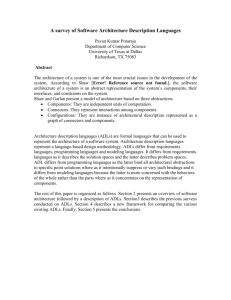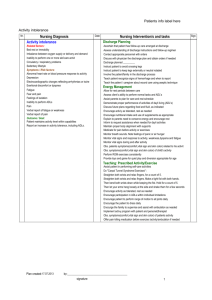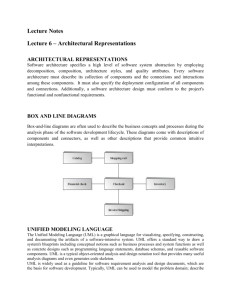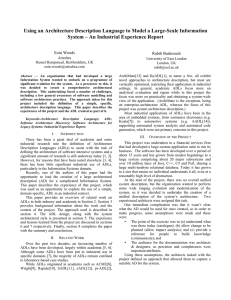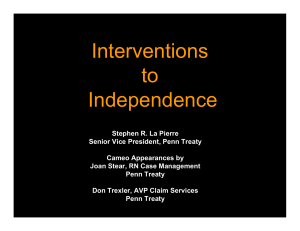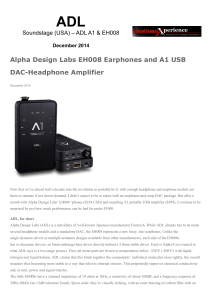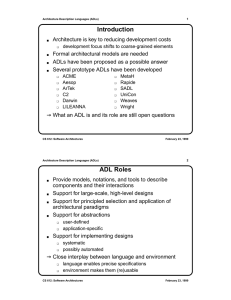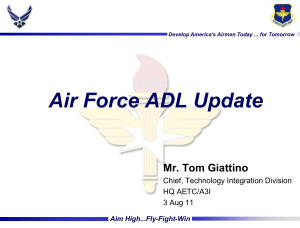Architecture Description Languages and Architecture Viewpoints
advertisement
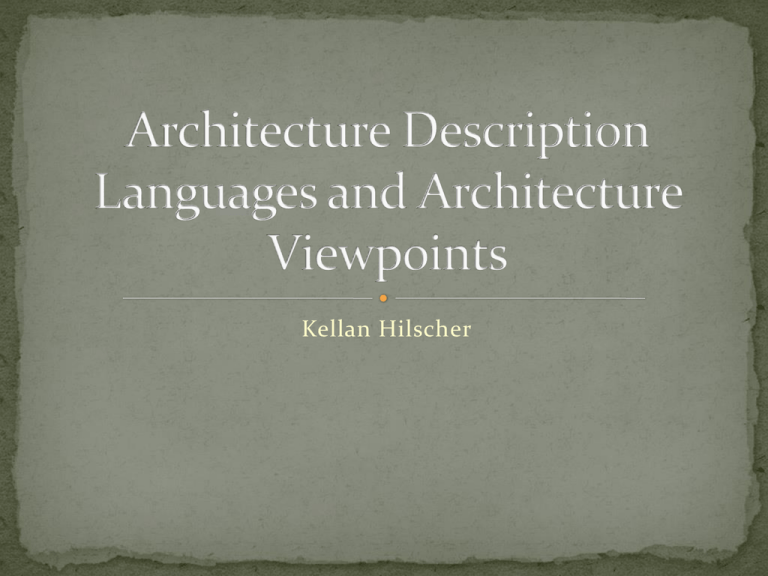
Kellan Hilscher Definition Different perspectives on the components, behavioral specifications, and interactions that make up a software system Importance of Formalized Architecture Architectural decisions have a very long lifespan Very valuable tool in developer and stakeholder understanding of a system at a high level Increased potential for commonality across architectures. Reduces time spent in maintenance and evolution phases Formal languages that can be used to represent the architecture of software-intensive systems. Evolved from Module Interconnection Languages Allow for very high level views of a system even before design work begins Allow for early analysis and feasibility testing of architectural possibilities How ADLs Work Decompose a system into multiple components, connections, and configurations Standardization through the use of styles Provide different views of a system’s architecture Definition Diverse representations of a system’s architecture for distinct audiences and uses Ex. Structural, behavioral, physical Viewpoints address concerns identified by particular stakeholders Ex. A process viewpoint might address concurrency, distribution, scalability, and integration First version released in 1997 Similar to IBM Rational for UML Two components: Acme ADL AcmeStudio Can act as a vehicle for standardizing elements used across multiple ADLs Architecture (formerly Avionics) Analysis & Design Language Describes DRE architectures with software and hardware components Dissuades “build then test” mentality Specialized for processor architecture description. Allows users to generate assemblers and simulators for processors from: Architecture Resources: User provides processor resource info from programmer’s manual Instruction Set Architecture: User enters information about each instruction such as format and syntax, behavior, and info for decoding Tailors the modeling environment to your processor No clear consensus on what is required of architecture modeling (or ADLs) Can be very convoluted Many lack explicit mechanisms for multiple architecture views. “[A]n ADL for software application focuses on the high-level structure of the overall application rather than the implementation details of any specific source module” Less formalized than ADLs No notion of entity restriction (styles) Largely a documenting language Idea: One view cannot capture an entire complex architecture Concurrent views: 4: Logical View – Object Model Process View – Concurrency Model Physical View – Mapping and distribution of software to hardware Development View – Development environment view +1: Use Cases/Scenarios Logical Model -> Class Diagram Process Model -> Activity Diagram Development Model -> Package Diagram Physical Model -> Deployment Diagram Wraps the notion of component standardization around design languages: Contexts (styles) Properties (style conformant attributes) Operations (define property behavior) Provides additions to graph navigations Less ambiguity OCL tools parse UML diagrams to provide further analysis
